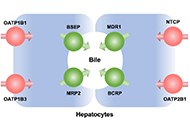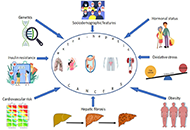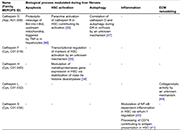Monitoring the hepatobiliary function using image techniques and labeled cholephilic compounds
Evaluation of the hepatobiliary function is critical for the clinicians, not only for the diagnosis of a large variety of liver diseases but also in the follow-up and management of some patients, for instance, those with different
[...] Read more.
Evaluation of the hepatobiliary function is critical for the clinicians, not only for the diagnosis of a large variety of liver diseases but also in the follow-up and management of some patients, for instance, those with different degrees of cholestasis suffering from a drug-induced liver injury (DILI) or scheduled for liver resection. Currently, the determination of global liver function mainly relies on laboratory tests, clinical scores, and data from images obtained with ultrasonography, computed tomography (CT), or magnetic resonance. Nuclear medicine scanning, displaying either planar or three-dimensional spatial distribution of liver function, is enhanced when using hepatotropic tracers based on classical radioisotopes such as technetium-99m (99mTc) and with higher resolution using metabolized probes such as those based on monosaccharide derivatives labeled with 18F. Other cholephilic compounds, and hence selectively secreted into bile, have been proposed to visualize the correct function of the liver parenchyma and the associated secretory machinery. This review aims to summarize the state-of-the-art regarding the techniques and chemical probes available to monitor liver and gallbladder function, in some cases based on imaging techniques reflecting the dynamic of labeled cholephilic compounds.
Beatriz Sanchez de Blas ... Marta R. Romero
Evaluation of the hepatobiliary function is critical for the clinicians, not only for the diagnosis of a large variety of liver diseases but also in the follow-up and management of some patients, for instance, those with different degrees of cholestasis suffering from a drug-induced liver injury (DILI) or scheduled for liver resection. Currently, the determination of global liver function mainly relies on laboratory tests, clinical scores, and data from images obtained with ultrasonography, computed tomography (CT), or magnetic resonance. Nuclear medicine scanning, displaying either planar or three-dimensional spatial distribution of liver function, is enhanced when using hepatotropic tracers based on classical radioisotopes such as technetium-99m (99mTc) and with higher resolution using metabolized probes such as those based on monosaccharide derivatives labeled with 18F. Other cholephilic compounds, and hence selectively secreted into bile, have been proposed to visualize the correct function of the liver parenchyma and the associated secretory machinery. This review aims to summarize the state-of-the-art regarding the techniques and chemical probes available to monitor liver and gallbladder function, in some cases based on imaging techniques reflecting the dynamic of labeled cholephilic compounds.
 Monitoring the hepatobiliary function using image techniques and labeled cholephilic compoundsOpen AccessReviewEvaluation of the hepatobiliary function is critical for the clinicians, not only for the diagnosis of a large variety of liver diseases but also in the follow-up and management of some patients, for instance, those with different [...] Read more.Beatriz Sanchez de Blas ... Marta R. RomeroPublished: February 28, 2023 Explor Dig Dis. 2023;2:18–33
Monitoring the hepatobiliary function using image techniques and labeled cholephilic compoundsOpen AccessReviewEvaluation of the hepatobiliary function is critical for the clinicians, not only for the diagnosis of a large variety of liver diseases but also in the follow-up and management of some patients, for instance, those with different [...] Read more.Beatriz Sanchez de Blas ... Marta R. RomeroPublished: February 28, 2023 Explor Dig Dis. 2023;2:18–33 Extra-hepatic cancers in metabolic fatty liver syndromesOpen AccessEditorialAmedeo LonardoPublished: February 24, 2023 Explor Dig Dis. 2023;2:11–17
Extra-hepatic cancers in metabolic fatty liver syndromesOpen AccessEditorialAmedeo LonardoPublished: February 24, 2023 Explor Dig Dis. 2023;2:11–17 Lysosomal hydrolases, from waste-bags effectors to essential multipurpose enzymes in liver fibrosisOpen AccessReviewLysosomal hydrolases were once considered effectors of the waste disposal system of the cell, the endo-lysosomal system. However, they are now recognized as highly selective enzymes, which can modul [...] Read more.María Fernández-Fernández ... Anna MolesPublished: February 22, 2023 Explor Dig Dis. 2023;2:1–10
Lysosomal hydrolases, from waste-bags effectors to essential multipurpose enzymes in liver fibrosisOpen AccessReviewLysosomal hydrolases were once considered effectors of the waste disposal system of the cell, the endo-lysosomal system. However, they are now recognized as highly selective enzymes, which can modul [...] Read more.María Fernández-Fernández ... Anna MolesPublished: February 22, 2023 Explor Dig Dis. 2023;2:1–10